One of the first thing you should learn when you look at music theory are the music note names, time values and the different symbols used to represent these. Musical notation is the visual representation of music and allows composers to share their music so other people can perform it.
Musical notation represents a few things, namely the duration of each note to be played and the pitch of each note to be played. So let’s first look at the different music notes names and their time values and get you on your journey to read music.
Music Note Names and their time values
When playing a piece of music, it is extremely important that you know how long to hold each note. There are different note symbols to represent the different durations and we will look at the most common ones here.
Whole Note (Semibreve)
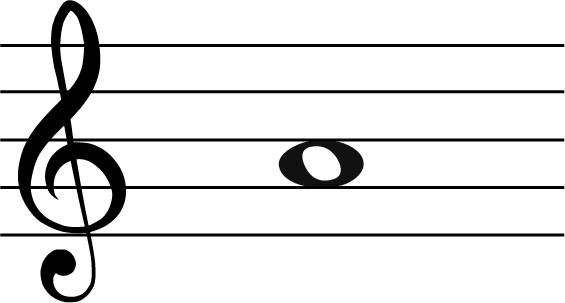
The note above is called a whole note or semibreve in the UK. It is represented by a small oval and can be drawn on any line or space on your stave. This small oval is called the note head.
This note is held for four counts.
Half Note (minim)
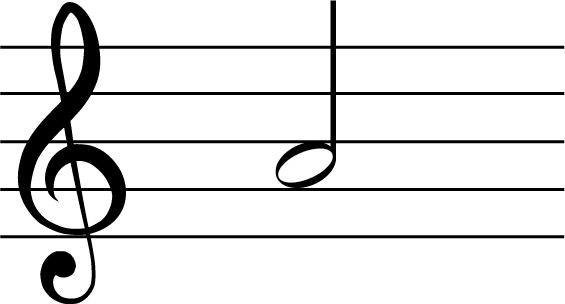
The note above is called a half note or minim in the UK. It is represented by a small oval and then a line, also called the stem, on either the right hand side if the step is point up or the left hand side if the stem is pointing down. Where the note sits on the stave will determine whether your stem will point up or down.
This note is held for two counts.
Quarter Note (Crotchet)
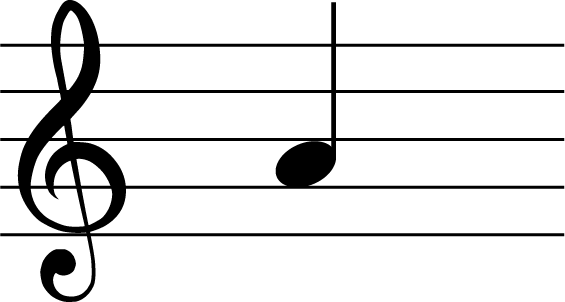
This note is called a quarter note or crotchet in the UK. It is represented by a small colored in oval and then a stem. As with the half note, this stem can be either the right hand side or the left hand side depending on where on the stave the note sits.
This note is held for one count.
Eighth Note (Quaver)
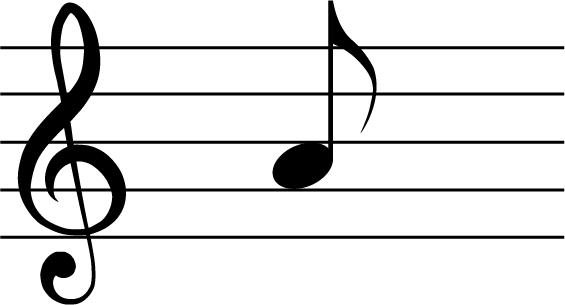
This note is called an eighth note or quaver in the UK. It is represented by a small colored in oval and then a stem, very much like the half note above, but this time we also have the addition of a tail. As with both the quarter note and half note the tail can point in either direction depending on where the note is on the stave.
It is also worth noting that if the stem is going down, the tail will curve upwards on the inside and if the stem is going up, the tail will curve downwards on the outside.
The tail is also sometimes referred to as a flag or a hook.
The eighth note is worth half a beat.
Sixteenth Notes (Semi-Quaver)

This note is called a sixteenth note or a semiquaver in the UK. As with the other notes, it is represented by a small colored in oval, a stem and a tail. However, this note has two tails.
As with the eighth notes, the tails will point in a different direction depending where it is written on the stave. If the stem is pointing down, the two tails will be curved upwards on the inside. If the stem is pointing up the two tails will be curved downwards on the outside.
The sixteenth note is worth a quarter of a beat.
Thirty-Second Note (Demi-semi-quaver)
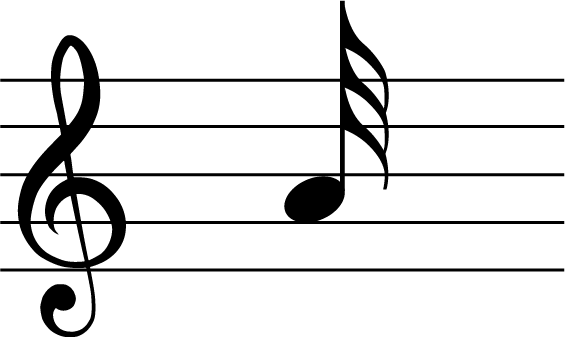
This note is called a thirty-second note or a demi-semi quaver in the UK. As with the other notes, it is represented by a note head, a stem and tails, except for this note we will have three tails!
The thirty-second note is worth an eighth of a beat.
Additional Note Lengths
There are some lesser known note lengths that are worth knowing. We will look at them now!
Double Whole Note (Breve)
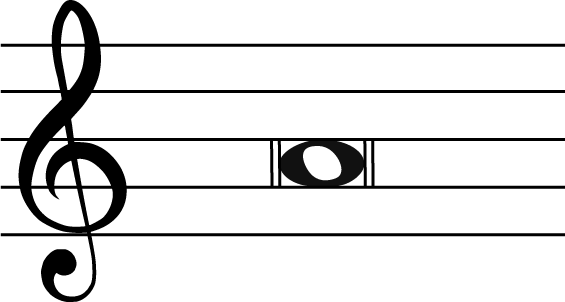
This note length is worth two whole notes and as such is called the double whole note or breve in the UK. You do not see this note too much in music, but if your music is in 4/2 then it can come in very handy!
It is represented by a note head, like how we draw the whole note, and then either side there will be two vertical lines.
Sixty-fourth note (hemi-demi-semi quaver)
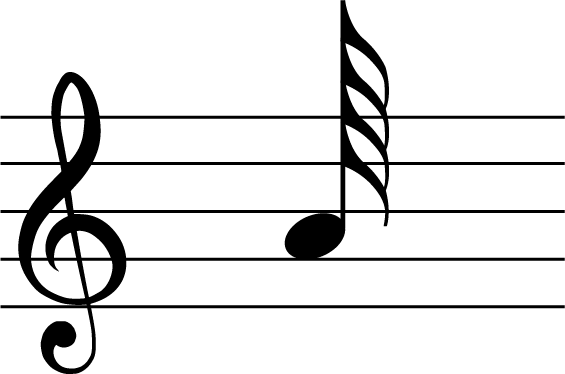
This note is one of the shorter notes that you will see, with a note value of a sixteenth of a beat.
The Music Note Tree
Sometimes you might see all of these music notes represented in what we call a music note tree. At the top of the tree we start with the longer musical notation, usually it starts with the whole note but you can start the tree with a double whole note.
As you move down you can see that there are two musical notes of the shorter value within each note above. This can go right down to sixty-fourth notes and is a great way to see how the music notation works together.

Rests and When Not to Play
It is also important to note that all of these musical notes have relevant rests.
Whole note rest
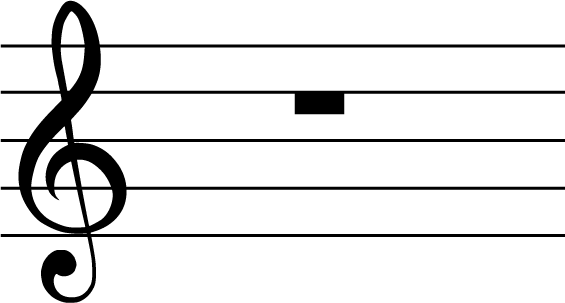
Half note rest
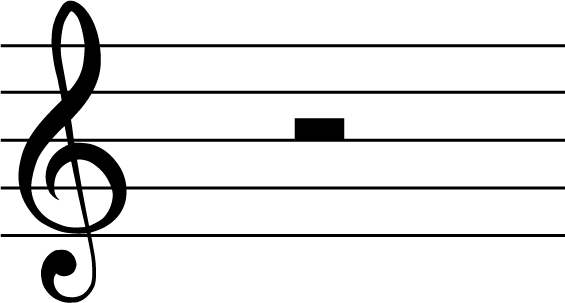
Quarter note rest

Eighth note rest
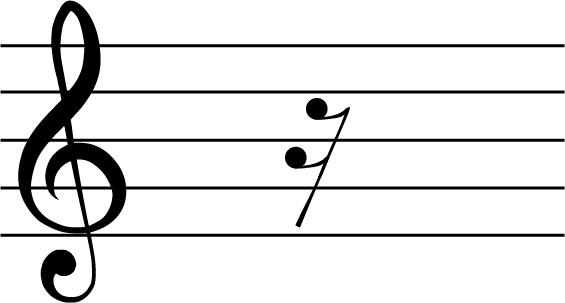
Sixteenth note rest
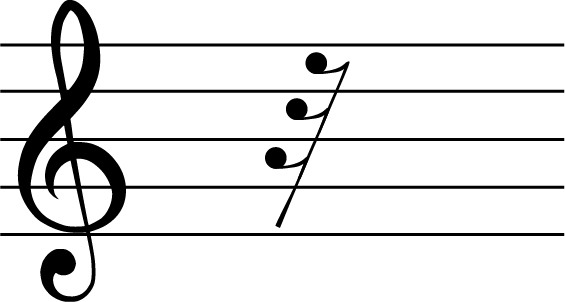
Thirty-Second note rest
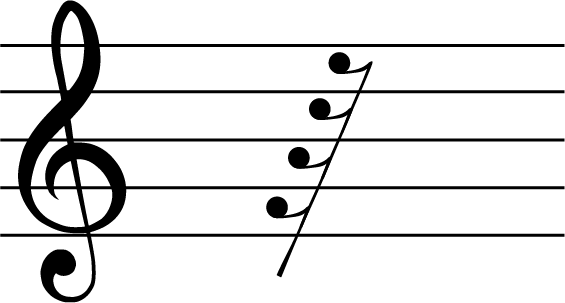
Additional Duration Increase
It is also possible within music theory to increase the duration of your musical notation. We can do this by simply adding a dot to each note. By adding a dot you can increase the length of the music note by half of its value.
A dotted whole note would be worth a whole note plus a half note, making a dotted whole note worth 6 beats.
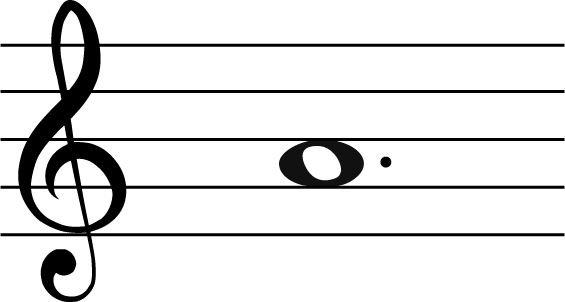
A dotted half note would be worth a half note plus a quarter note, making the dotted half note worth 3 beats.
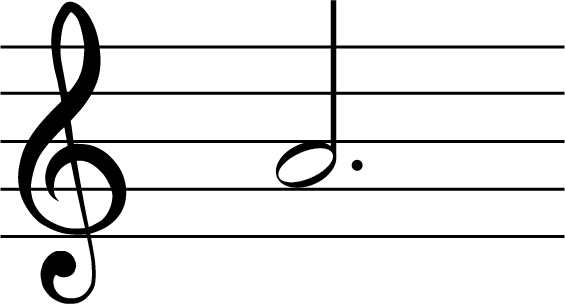
A dotted quarter note would be worth a quarter note plus an eighth note, making the dotted quarter note worth one and a half beats.
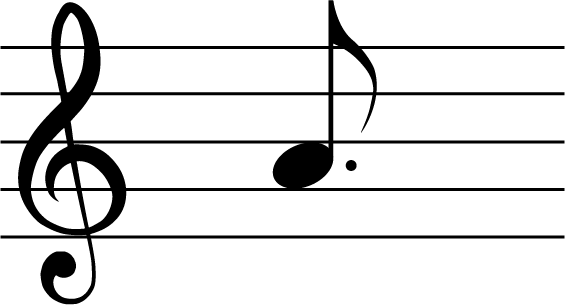
A dotted eighth note would be worth and eighth note plus a sixteenth note, making the dotted eighth note worth three quarters of a beat
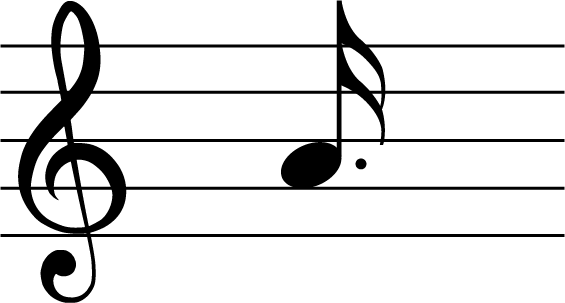
It is perfectly possible to add dots to all musical notation.
Beaming Notes Together
As we have seen, many of these notes have tails. However, it is very rare that you will see lots of tails in your music! To make the music notation easier to read, we often beam together the tails. When you beam musical notation together the tails will simply be joined above or below the notes in a straight horizontal line. The notes beamed together do not have to be the same note lengths, it is perfectly possible to join together a combination of eighth notes and sixteenth notes (quavers and semiquavers) and even shorter musical notation.

Tied Notes
It is also possible to tie notes together using the below symbol.

This symbol will be placed on two musical notes that have the same pitch. It will then simply indicate to the performer to play the note for a longer duration.

How these note lengths all fit together in written form
When writing music notation it is very important to have some order to make the music easier to read. In order to do this, we use a meter or time signature.
The meter is simply two numbers written on top of each other at the start of the music. These numbers indicate how many beats you will need in your measure. To separate each of these measures, we use bar lines. Bar lines help to give the music structure and by knowing how many beats you have in each measure it makes the music much easier to count!
Below you can see a short piece of music with a 4/4 meter and a bar line after every four quarter note beats.

Pitch of Notes
Musical notation is also important when telling us the pitch of the notes to be played. In order to show the pitch of notes it is important to use what we call a staff or stave in the UK.

At the start of this stave you will have a clef, this will either be the treble clef, bass clef, alto clef or tenor clef. Learn more about clefs with our complete guide.
Which clef is at the start will determine what each of your notes are. You can then simply place your note lengths that you saw earlier in the article on different lines and spaces on the staff and this will represent what pitch needs to be played.
Musical notation uses what we call the musical alphabet. The musical alphabet uses the first seven letters of the regular alphabet. These seven notes are:
A B C D E F G
Each line or space represents one of these letters.
Ledger Lines
If you would like to have notes beyond the scope of the five lines of the staff then you can use ledger lines. A ledger line is simply an extra small line or lines either above or below the staff lines to allow more flexibility to play higher or lower notes.
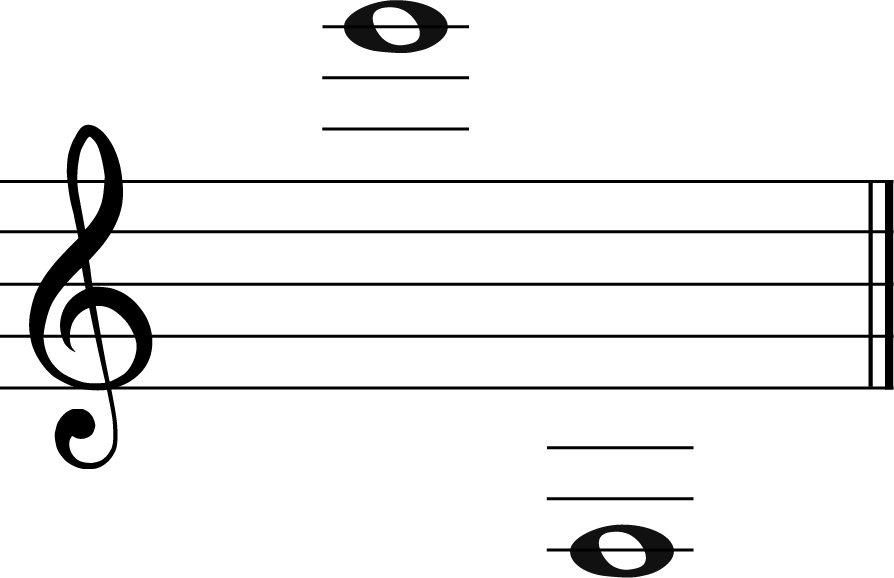
If you would like to learn more about ledger lines then check out our guide. .
Key Signatures and Accidentals
The pitch of a note can be altered further within music notation by using key signatures and accidentals.
A key signature is simply a selection of sharps or flats written at the start of a piece of music after the clef. Take a look at the example below using the treble clef. Notice how the treble clef is written first and then we have three sharps written afterwards. These sharp symbols represent the notes F, C and G and indicate to the performer that all F, C and G’s must be raised by a semitone, making them sharp!

As well as key signatures, we can also have accidentals. An accidental is the use of a sharp or flat sign but this time it will be written on a specific note in the piece and does not mean that every letter needs to raised or flattened.

We don’t just have the sharp symbol and the flat symbol. We also have the natural sign, double sharp and the double flat symbol.

Hopefully this has given you a great overview of the different musical notation you will see in your sheet music. By understanding all of these different elements you will be able to read music in its printed form.
